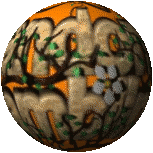It is the day before Midsummer or Midsummer's Eve, and I thought I would see if there were any unusual insects about. The insect population appears to be quite low for the time of year as by Midsummer there is usually a gentle hum of the winged insects that acts as a percussion to the bird song. This year it's almost deafeningly quiet.
I did spot an old favourite insect that reminds me of childhood ... the froghopper. This is one of those unexpected insects that brings giggles and gasps the first time that it is spied. For those of you who may never have seen one ... it is harmless ... and is usually very entertaining to young children. The adult looks remarkably frog like which is the first reason it was probably named froghopper - the second as its name describes it leaps, jumps or hops from leaf to leaf. Sometimes it jumps remarkable distances ... hence the gasps!
A female froghopper tends to lay batches of around eighty eggs in the hollows of dead plant stems late in the year. The young hatch out in the spring time into a little nymph. They then instinctively begin to climb up plant stems ... eventually they latch onto these and start sucking at the sap this helps them to make a protective cradle of frothy slime which they sink in to. The frothy bubbles are affectionately known as 'cuckoo spit' and the nymph will stay in this until it becomes a young adult and is able to jump to safety.





I did spot an old favourite insect that reminds me of childhood ... the froghopper. This is one of those unexpected insects that brings giggles and gasps the first time that it is spied. For those of you who may never have seen one ... it is harmless ... and is usually very entertaining to young children. The adult looks remarkably frog like which is the first reason it was probably named froghopper - the second as its name describes it leaps, jumps or hops from leaf to leaf. Sometimes it jumps remarkable distances ... hence the gasps!
A female froghopper tends to lay batches of around eighty eggs in the hollows of dead plant stems late in the year. The young hatch out in the spring time into a little nymph. They then instinctively begin to climb up plant stems ... eventually they latch onto these and start sucking at the sap this helps them to make a protective cradle of frothy slime which they sink in to. The frothy bubbles are affectionately known as 'cuckoo spit' and the nymph will stay in this until it becomes a young adult and is able to jump to safety.





Extra item: the first bees at the insect house left after filling three of the bamboo canes with what appeared to be mud. I have been watching out to see any more sightings of them and today the first one landed on the fence next to the insect house ... here is a picture of it. Shortly afterwards two were seen buzzing around the little insect house. I am still unsure whether these are, in fact the same species ... but at this stage they do look the same. None have developed the larger golden orange bottoms of the later stock of bees we had last year.















































2 comments:
Great photos. I stay in a townhouse complex. Unfortunately I never get to see the interesting insects similar to those described here. We are just plagued by cockroaches, mosquitos and ants. When I see our local insects I do not reach for the camera, I have to reach for the poison canister.
That is fascinating to me! I don't think that I have ever seen a froghopper! I need to check into an insect house. You have the neatest things.
Post a Comment